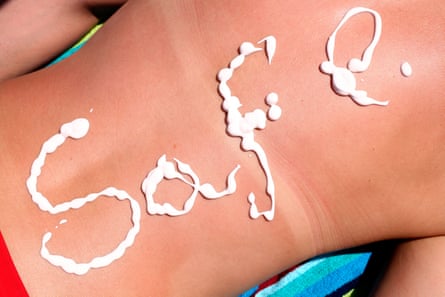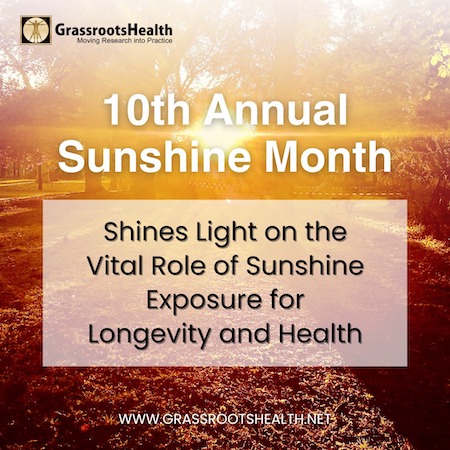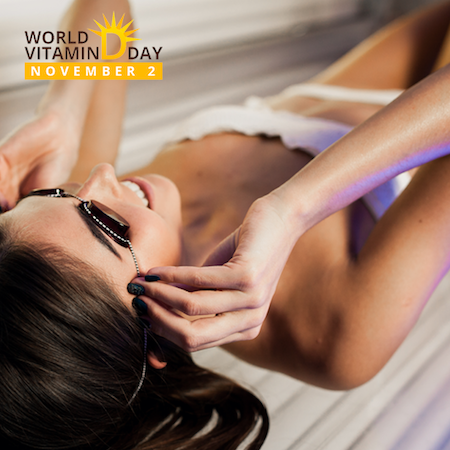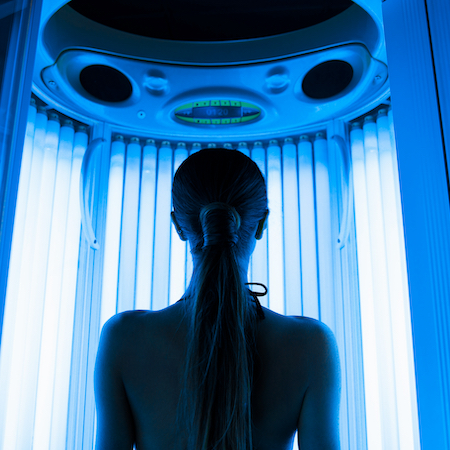For years we’ve been told to avoid sun to prevent skin cancer. But research suggests a dose of rays can boost your immune system and increase lifespan. We look on the bright side
Shades? SPF50 suncream? Wide-brimmed hat? For decades, it has been drilled into us that if the sun is out, we’d better slip on protective clothing, slop on suncream and slap on a hat to stay safe. There’s little doubt that too much sun exposure – and particularly sunburn – increases our risk of developing skin cancer. It also prematurely ages the skin. But scientists are increasingly questioning the mantra that sunlight is an evil to be avoided at all costs, and investigating the brighter side of sun exposure.
It’s not just about vitamin D. Though important for strong bones and teeth this sun-induced vitamin is just the tip of the iceberg in terms of the physiological processes that are influenced by sunlight falling on the skin. Sunseekers may even have a longer lifespan. So, can we capitalise on the benefits of sunshine, without risking skin cancer?
As daytime creatures living on a sunny planet, we shouldn’t be surprised that our bodies may have evolved ways of turning the sun’s energy to our advantage. The skin is our largest organ and it is packed with sun-responsive chemicals and machinery, the most obvious being melanin – the pigment that gives skin its colour.
People with darker skin start out with more melanin, but its production is also triggered by exposure to ultraviolet (UV) radiation in sunlight. Melanin absorbs some of these UV rays, helping to protect skin cells from DNA damage – although this protection is limited, and even dark skin tones can get sunburn and other forms of sun damage such as hyperpigmentation and skin ageing.
One way in which sunlight switches on melanin production is through the release of a substance called beta-endorphin, which also plays a role in stress relief and pain management. This could be one reason why many people find sitting in the sun so relaxing.
Of course, sunbathing is a double-edged sword. The first clues that sunlight might be associated with an increased risk of skin cancer came in the late 1920s, when a British researcher called George Findlay observed that mice that were regularly irradiated with UV light developed tumours on their skin. Numerous studies have since shown that UV light triggers DNA mutations in skin cells which, left unchecked, could lead to skin cancer.
Puzzlingly though, despite facing an increased risk of skin cancer, people who are exposed to lots of sun appear to have longer life expectancies, on average, than sun avoiders.

This counterintuitive connection first came to light in 2014, when a Swedish researcher called Pelle Lindqvist published the results of a large study that followed the health of around 30,000 women over 20 years. It found that, on average, women who spent more time in the sun lived for one to two years longer than those who avoided the sun, even after taking into account factors such as wealth, education and exercise. This increased life expectancy appeared to stem from lower rates of cardiovascular disease and other non-cancer-related illnesses, including type 2 diabetes, autoimmune disease and chronic lung disease.
Other studies have since identified a similar pattern, including among pale-skinned Britons. In July, Richard Weller at the University of Edinburgh and his colleagues published a preprint analysis which drew on data from 376,729 people with white ancestry who were enrolled in the UK Biobank Study – an enormous online database of medical and lifestyle records – whose health was followed for an average of 13 years.
It found that those with more active sun-seeking behaviour were 14% less likely to die from any cause during the study period compared to sun avoiders, and their risk of death from cardiovascular disease was 19% lower.
Overall, more active sunseekers had around 50 extra days of survival, on average, while participants living in southern parts of the UK lived an 16 extra days, compared to those living 300 km farther north – even after adjusting for factors such as socioeconomic status.
You might think that 50 days’ extra lifespan isn’t much, but at a population level, that’s huge
“You might think that 50 days’ extra lifespan isn’t much, but at a population level, that’s huge,” Weller says. “Basically, after correcting for all the confounders, in Britain – just like in Sweden – the more sunlight people have, the longer they live.”
Curiously, active sunseekers’ risk of dying from cancer, including skin cancers, was also 14% lower. Weller says a similar pattern has been seen in other studies too. “We know that when melanoma is diagnosed, people with higher measured vitamin D levels have a better prognosis,” he says.
Vitamin D is manufactured in our bodies when the UVB rays in sunlight react with a chemical in the skin called 7-dehydrocholesterol. Bone and muscle cells use it to regulate levels of calcium and phosphorus, which are needed to keep them strong and healthy, while immune cells also use it to help fend off harmful microbes and promote wound repair. Vitamin D receptors are also found on other body tissues including the heart and brain, and in recent years the list of illnesses associated with vitamin D deficiency has grown to include cardiovascular disease, infections and cancer.
Surprisingly though, large long-term trials assessing the impact of taking daily vitamin D supplements to prevent these conditions have produced mixed results, prompting some researchers to question whether they may have been looking at this from the wrong perspective. “Your vitamin D level is a biomarker that you have been in the sun, but it is not necessarily the active agent involved in human disease pathogenesis,” says Prof Prue Hart at the Telethon Kids Institute in Perth, Australia.
Hart is one of those investigating whether the sun’s UV rays are affecting our health in additional ways. Besides triggering DNA damage in our skin cells, another reason why excessive sun exposure may increase the risk of skin cancer is because because it dampens the activity of immune cells that would usually detect damaged cells and destroy them.
Yet some immune dampening may be beneficial, helping to temper overactive immune responses. Possibly, our immune systems even have evolved with this mildly immune-suppressive input from sunlight wired in. Now that we spend the majority of our lives indoors, this system may have fallen out of balance, increasing the risk of autoimmune disease.
Take multiple sclerosis, which is caused by the immune system mistakenly attacking the brain and nerves. Numerous epidemiological studies have associated higher lifetime exposures to sunlight with a lower risk of developing the condition.
Hart is now investigating whether exposing people with the earliest form of MS to UVB rays could halt or delay its progression. A pilot study in 20 individuals suggested that a year after undergoing such phototherapy, seven out of 10 people had developed MS, compared to all 10 of those who did not receive the treatment. Further experiments also revealed significant differences in their blood immune cell profiles – particularly their antibody-producing B cells.

Other mechanisms may also be at play. Like many dermatologists, Weller started his career believing sunlight was inherently damaging. But about 15 years ago, he discovered large stockpiles of nitric oxide – a potent dilator of blood vessels – in human skin. Further research revealed that these stockpiles were activated by UVA rays, and that exposing individuals to a dose of UVA equivalent to spending about 20 minutes outdoors at noon during British summer time, resulted in a temporary, but significant drop in blood pressure.
Meanwhile, recent research by Prof Carmit Levy, at Tel Aviv University in Israel, found that sun exposure prompted the release of the “hunger hormone” ghrelin in men’s skin. Here, the trigger appeared to be DNA damage. Besides regulating appetite, ghrelin also helps to reduce inflammation and blood pressure, so this could be another mechanism through which sun exposure exposure influences cardiovascular disease risk.
As evidence mounts for these potentially beneficial effects of sunlight, so do calls for a rethink of public health advice on how best to stay safe in the sun. In 2020, Weller, Hart, Lindqvist and 12 other researchers published a review in the International Journal of Environmental Research and Public Health, alerting doctors and policymakers to the “significant public health problem of insufficient sun exposure”.
While they don’t dispute that UV exposure is a major cause of skin cancer, they believe the “Slip, Slap, Slop” approach to sun avoidance – originally advocated by Cancer Council Australia, but now broadly adopted in other countries – may be damaging the health of people living in high-latitude countries such as the UK.
“The ‘Slip, Slap, Slop’ guidance is appropriate for the descendents of white-skinned north Europeans living in high-UV environments such as Australia, where they have a lot of skin cancer. But it is not appropriate for white-skinned Brits here in Scotland, and it is absolutely inappropriate for dark-skinned Brits, who have made the reverse migration from Africa or India,” says Weller.
So, what to do? What almost everyone agrees on is that the amount of sun exposure needed to stay healthy is far lower than the amount that causes sunburn.
The problem with advocating even limited sun exposure is that many people find it difficult to moderate
The problem with advocating even limited sun exposure is that many people find it difficult to moderate, and it is almost impossible to recommend specific amounts of “safe” sun exposure because everyone’s skin is different, says Michelle Baker, CEO of the Melanoma Fund, a charity which raises awareness of sun protection in sport and outdoor recreation. The sun’s intensity also varies hour to hour, day to day, and latitude to latitude.
One approach is to check the UV index, which tells us how strong the sun’s UV rays are and when we’re most at risk of burning. If it is 3 or above, you need to think about protecting your skin – particularly if you have light skin or lots of moles or freckles, or a personal or family history of skin cancer.
Dr Walayat Hussain of the British Association of Dermatologists said: ‘[We] recommend that people avoid sunburn and heavy tanning, as these increase your chance of skin cancer. You don’t have to avoid the sun all year, but a few steps when out in the sunshine – whether this be in the UK or abroad on holiday – will help protect you. These steps include: protecting your skin with clothing, spending time in the shade when the UV index is high – typically between 11am and 3pm in the UK – and using sunscreen.” Baker stresses that using sunscreen will not make you vitamin D-deficient: “No matter how much you use or how high the SPF, some of the sun’s UV rays will reach your skin,” she says.
Weller also agrees that sunscreen is a sensible precaution. “Sunscreen is important because of the way we live our lives now, which is we get short, intense periods of sunlight on holiday, which is very unnatural,” he says. “Sunscreen definitely prevents skin ageing, and it prevents burning. It should be used for that – because that’s what matters.”
Even so, it may be time to move on from the idea that sun exposure is inherently bad. We still don’t know precisely what the optimal amount is – and it almost certainly varies from person to person – but what is becoming clear is that the effects of sun exposure are far greater than skin deep.
I hope you appreciated this article. Before you move on, I was hoping you would consider taking the step of supporting the Guardian’s journalism.
From Elon Musk to Rupert Murdoch, a small number of billionaire owners have a powerful hold on so much of the information that reaches the public about what’s happening in the world. The Guardian is different. We have no billionaire owner or shareholders to consider. Our journalism is produced to serve the public interest – not profit motives.
And we avoid the trap that befalls much US media – the tendency, born of a desire to please all sides, to engage in false equivalence in the name of neutrality. While fairness guides everything we do, we know there is a right and a wrong position in the fight against racism and for reproductive justice. When we report on issues like the climate crisis, we’re not afraid to name who is responsible. And as a global news organization, we’re able to provide a fresh, outsider perspective on US politics – one so often missing from the insular American media bubble.
Around the world, readers can access the Guardian’s paywall-free journalism because of our unique reader-supported model. That’s because of people like you. Our readers keep us independent, beholden to no outside influence and accessible to everyone – whether they can afford to pay for news, or not.
If you can, please consider supporting us just once from $1, or better yet, support us every month with a little more. Thank you.
Betsy Reed
Editor, Guardian US



